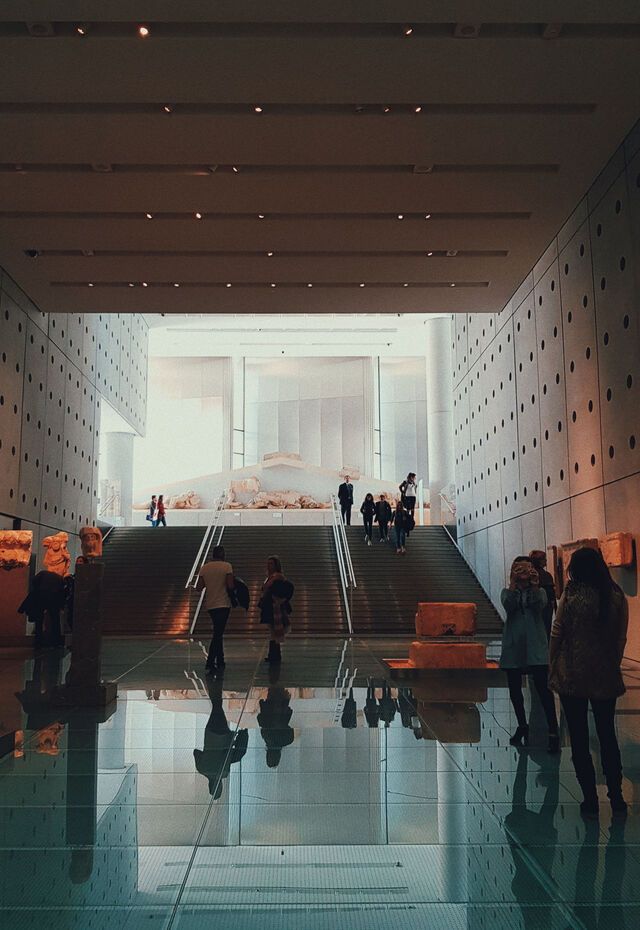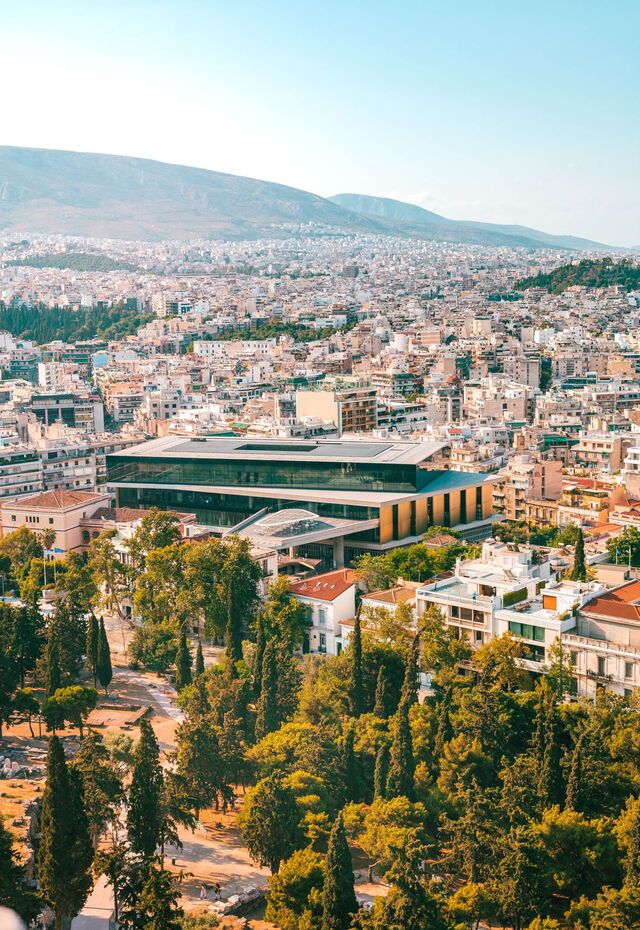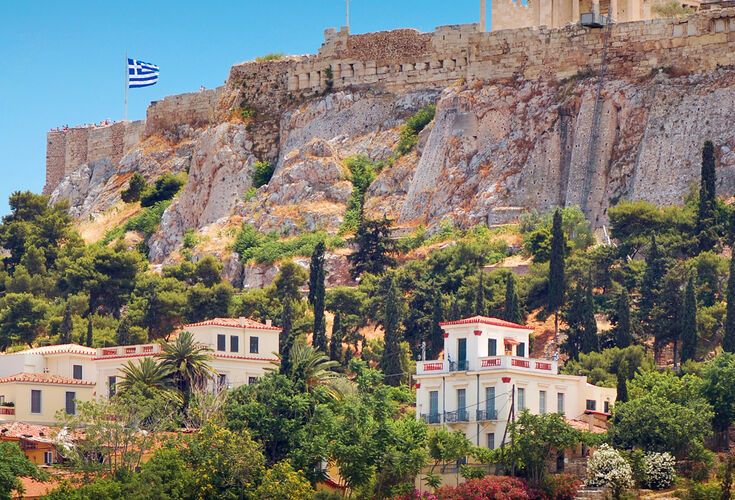The Acropolis Museum in Athens


OVERVIEW
The Acropolis Museum in Athens
If an ancient Greek were suddenly to visit modern-day Athens, there’s no question where you’d find them. Not only would they feel right at home in the Acropolis Museum, but exploring its four floors would be for them – just as much as it is for us – one of the most privileged cultural treats anywhere in the world.
Kingship, aristocracy, tyranny and, ultimately, democracy – it’s all there, the complete history of ancient Athens in a museum built above a neighbourhood continually inhabited since 4000 BC. The 14,000 sq m of beautifully laid out exhibition space is specially designed to complete the experience of visiting the Acropolis of Athens, just next door. You’ll find beautiful sculptures and illuminating artefacts unearthed during the excavation of not just the Acropolis but the museum itself, culminating in the top-floor Parthenon Gallery – positioned to mirror the Parthenon itself.
At the same time, the museum’s modern design and subtle lighting proudly represent everything that has made Athens one of the most popular city break destinations in Europe. So whether you explore the Acropolis Museum on your own or join a guided tour with an archaeologist (recommended), you’ll be richly rewarded.
DON'T MISS
The Acropolis Museum in Athens
The detail of the exhibits and sculptures in the Acropolis Museum is astonishing, so we’ll merely whet your appetite with a few pointers. Take a moment to admire the miniature replicas of the Acropolis after each of major invasions in Athens’ history – Persian, Roman, Ottoman and Venetian – in the foyer to place everything you’re about to see into context.
- BASEMENT & GROUND FLOOR
An ancient Athenian neighbourhood
Before you move into the main exhibition space of the Acropolis Museum, head down to the display of the ancient Athenian neighbourhood uncovered during the building of the museum. Visible through glass floors above, the remains can also be visited. The complex layout of streets, houses, baths, workshops and tombs gives an insight into the history of ancient Athens, from as early as the 4th millennium BC up to the 12th century AD.
The Gallery of the Slopes of the Acropolis
On a pathway angled to represent the experience of ascending the Sacred Rock, this gallery contains artefacts found during the creation of the museum. Objects such as perfume bottles and symposium vases, cosmetics and jewellery containers, and spindle-whorls and artwork depicting birth and death ceremonies reveal intriguing details of everyday life in the houses and sanctuaries below the Acropolis of Athens.
- FIRST FLOOR
The Archaic Acropolis Gallery
Moving on to the first floor, you come face to face with the sculptures of the Archaic period (7th century BC to the end of the Persian Wars in 479 BC) – impressive enough, but even more so when you learn that they were once brightly coloured with natural dyes. You’ll also find the remains of structures like the Hekatompedos (a building probably in the place of the first Parthenon) and the pediment of the Gigantomachy (a battle between Gods and Giants), which decorated the Old Temple.
The Propylaia, Erechtheion and Temple of Athena Nike
Amongst the highlights from the Golden Age of Pericles in the 5th century BC. Take your time to explore them one by one – including the noble Caryatids, those dignified female figures propping up the porch of the Erechtheion (on the north side of the Acropolis). Note the empty circle left for the Caryatid taken by Lord Elgin (along with nearly half the 150m marble frieze around the Parthenon) and sold to the British Museum in the early 19th century. There’s also a wonderfully detailed, scaled-down replica of the Temple of Athena Nike.
The Gallery of 5th century BC to the 5th century AD
Displaying many of the statues and votives (dedications to the gods) found around the Acropolis, this gallery includes representations and sculptures of gods, heroes, mythological themes and portraits of famous men, from the Classical, Hellenistic and Roman periods.
- TOP FLOOR
The Parthenon Gallery
The top-floor dedication to the Parthenon’s metopes, frieze and pediments is rightly the highlight of the Acropolis Museum. You can walk right around the frieze (with original marbles completed by replicas of those taken or destroyed), admiring the intricacy of the marblework. And when you’re done, you’ll look at the Parthenon itself – visible through the northern windows – in a whole new light.
GET PLANNING
How much do Acropolis Museum tickets cost?
- Tickets cost €5-10 (excluding tour guide) depending on the season.
- Certain pre-paid tickets will allow you to avoid lengthy queues at peak times.
How long does it take to visit the Acropolis Museum?
- You could spend a couple of hours in the museum or half the day. It’s a matter of how much time you have available and how much detail you want to go into.
- Most guided tours last 2-3 hours.
Skip the line - Book your tickets
How do you get to the Acropolis Museum in Athens?
From the airport
By metro: Blue Line to Syntagma station and then Red line (one stop) to Acropolis station.
By car or taxi: 35km, 40mins (approx. €40 during the day)From Piraeus port
By metro: Blue Line to Syntagma station and then Red line (one stop) to Acropolis station.
By car or taxi: 15km, 30mins (approx. €30 during the day)
When is the best time to visit the Acropolis Museum in Athens?
- The museum is open all year round, with shorter opening times during the winter months.
- It is closed on some national holidays.
- It’s worth visiting early (before 10:00) or after 16:00, to avoid the crowds (just watch out for the earlier midweek closing times during the winter).
Discover Greece tip: If you’re in Athens on a Friday, take advantage of the 22:00 closing time. You could even combine it with dinner as the restaurant is open till midnight. There’s often a three-piece band to accompany the views of the lit-up Acropolis.
- Autumn
- Spring
- Summer
- Winter
- As well as the restaurant and cafe, there are two very good gift shops.
- You can book an Acropolis guided tour with an experience provider or directly through the to the Association of Licensed Tourist Guides.
- There is good access to all floors for visitors with disabilities.
- A short guide is available in Braille.




